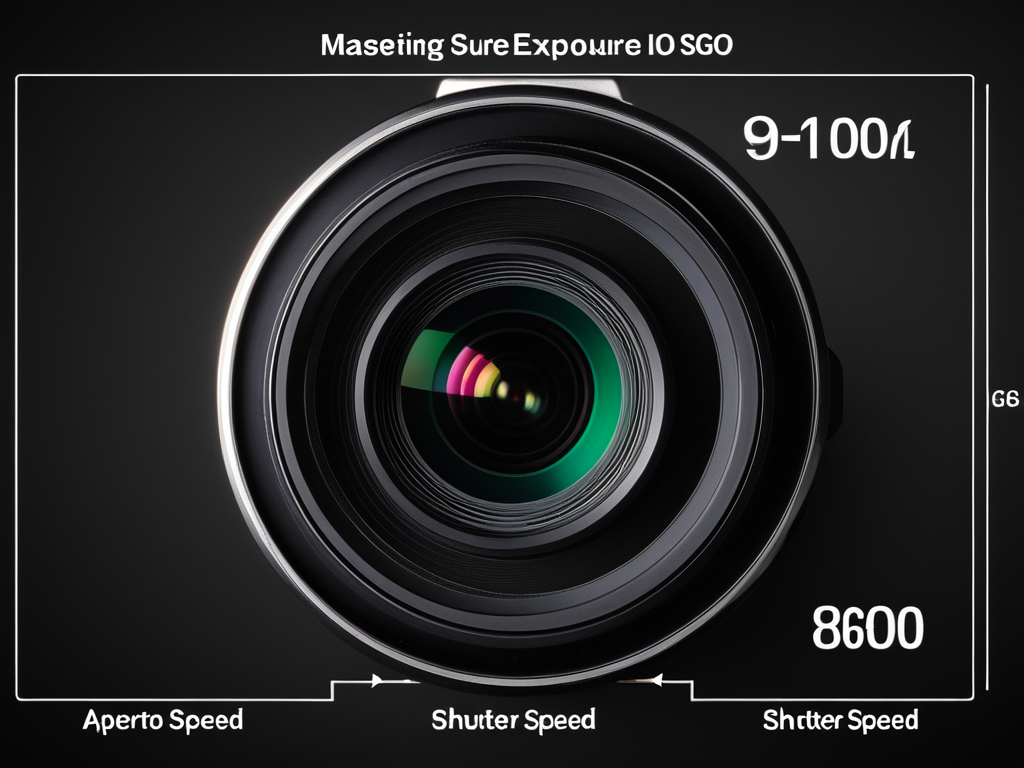Mastering Exposure: Aperture, Shutter Speed & ISO for Beg...

Understanding the Fundamentals of Photography: Aperture, Shutter Speed, and ISO
As a photographer, mastering the technical aspects of your craft is crucial to producing high-quality images. One of the most fundamental concepts in photography is the exposure triangle, which consists of aperture, shutter speed, and ISO. In this guide, we will delve into each component, providing practical examples and explanations to help you understand how to effectively use these tools to capture stunning photographs.
What is Aperture?
Aperture refers to the size of the opening in a lens that controls the amount of light entering the camera. It is measured in f-stops (e.g., f/2.8, f/4, f/5.6), which represent the ratio between the diameter of the aperture and the focal length of the lens.
Aperture Effects
Aperture has a significant impact on your photographs:
- Depth of Field: A larger aperture opening (smaller f-stop number) will result in a shallower depth of field, where the subject is in focus while the background is blurred.
- Light Intake: The size of the aperture also affects the amount of light entering the camera. A smaller aperture opening (larger f-stop number) allows more light to enter.
What is Shutter Speed?
Shutter speed refers to the length of time the camera’s shutter remains open, measured in seconds or fractions of a second. Faster shutter speeds freeze motion, while slower speeds create blur and artistic effects.
Shutter Speed Effects
Shutter speed has an impact on your photographs:
- Motion Capture: A faster shutter speed (1/1000th of a second or faster) is ideal for capturing sharp images of moving subjects.
- Artistic Blur: Slower shutter speeds (around 1-30 seconds) can create artistic blur effects, such as waterfalls, clouds, or streetlights.
What is ISO?
ISO refers to the camera’s sensitivity to light. A lower ISO setting means the camera requires more light to capture an image, while a higher setting allows for better low-light performance but may introduce noise (grain).
ISO Effects
ISO has an impact on your photographs:
- Noise Reduction: Higher ISO settings can lead to increased digital noise, especially in low-light conditions.
- Low-Light Performance: A lower ISO setting is ideal for capturing images in bright lighting conditions.
Understanding the Exposure Triangle
The exposure triangle consists of aperture, shutter speed, and ISO. Each component affects the others:
- Aperture Priority Mode (A/Av): Set the desired aperture value, and the camera will adjust the shutter speed accordingly.
- Shutter Speed Priority Mode (S/Tv): Set the desired shutter speed value, and the camera will adjust the aperture opening accordingly.
- Manual Mode (M): Set both aperture and shutter speed values manually.
Practical Applications
Let’s consider a few practical scenarios to illustrate how to effectively use the exposure triangle:
- Capturing Portraits: Use a large aperture opening (f/1.4 or f/2) for a shallow depth of field, isolating your subject from the background.
- Freezing Motion: Employ a fast shutter speed (1/1000th of a second or faster) to capture sharp images of moving subjects, such as athletes or wildlife.
Tips and Tricks
Here are some expert tips and tricks to help you master the exposure triangle:
- Understand Your Camera’s Limits: Familiarize yourself with your camera’s capabilities and limitations.
- Practice Makes Perfect: Experiment with different aperture, shutter speed, and ISO combinations to develop a deeper understanding of their effects.
Conclusion
In conclusion, mastering the fundamentals of photography requires a solid grasp of aperture, shutter speed, and ISO. By understanding how these components interact within the exposure triangle, you will be able to capture stunning photographs that showcase your artistic vision.
About David Lopez
As a seasoned photographer and blogging expert, I help creatives refine their craft on lentecreativa.com. With a focus on practical tips & techniques, I inspire photographers to push boundaries and capture stunning images.
